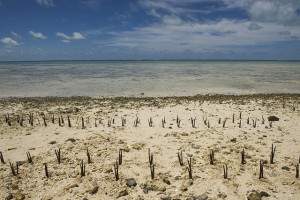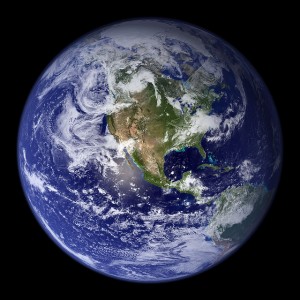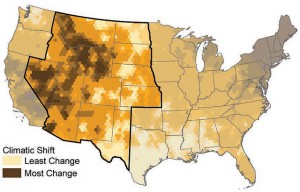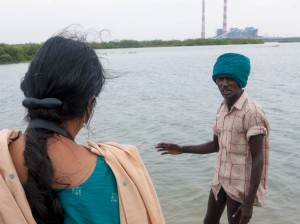Reporting on climate change: Part I
Climate change was once a niche topic; now it’s as big as the world. And, it’s a challenging one for journalists, especially for those without a science background. But since climate change could well be the story of the century, it’s important to cover it well. In this two-part series, Kyle James has tips on how to approach climate reporting, make your stories appealing to the general public, and avoiding common mistakes.
Last year, I was sent to India to teach a workshop for print journalists from around southern Asia on climate change reporting. It was an exciting assignment, and a daunting one, given the complexities and controversy surrounding the issue.
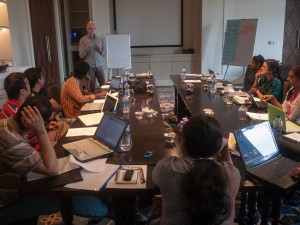 Luckily, I was teamed up with Alex Kirby, a former BBC journalist and co-founder of the Climate News Network. These posts largely come out of our presentations and discussions during our weeks in Chennai, with each other and a group of talented, engaged journalists.
Luckily, I was teamed up with Alex Kirby, a former BBC journalist and co-founder of the Climate News Network. These posts largely come out of our presentations and discussions during our weeks in Chennai, with each other and a group of talented, engaged journalists.
Reporting on climate change poses particular challenges, and the best of us get it wrong sometimes. Recently, even the BBC has come in for criticism from lawmakers about allegedly giving the same weight to scientific fact and lobbyists’ opinions.
Some reporters may think climate change reporting is simply too difficult and throw up their hands. There are so many voices out there, often talking at cross-purposes, powerful interests backed up by loads of money, deceptive campaigns and information, and the kind of jargon-filled speech that would be hard for anyone without a PhD in climate science to make heads or tails of.
But climate change reporting is crucial, especially for the developing world, where the issue is often under-reported even though these countries are particularly vulnerable to its effects, such as rising sea levels, higher temperatures, changes in monsoon patterns, droughts, floods, violent storms, etc.
While you don’t need an advanced degree to report on the climate, you do need some basic knowledge and tools to get you on your way. Plus, it’s helpful to have some strategies to make sure people get past the headline or first sentence of your story. For many, climate change seems either boring, alarmist, or maybe not relevant to their day-to-day lives. It’s up to you to convince them otherwise.
Let’s look at how we can do that….
Understand the issue – With climate change reporting, a good knowledge of the basics is essential. If you don’t have a good grasp on things, your audience won’t either. Remember, no PhD is necessary, but if you’re scientific knowledge is limited, it’s time to brush up. You’ll need to know about the greenhouse effect, the sources of greenhouse gases, the differences between risk and climate and weather, adaptation and mitigation, for starters.
If your head is already spinning, luckily there are some excellent online resources such as the News University’s Covering Climate Change online mini-course or various environmental journalism toolkits. Of course, you’ll ask the experts the really tough questions, but you need a good foundation going into your interviews.
Make it understandable – This is good advice for any journalistic endeavor, but especially relevant here. We’re dealing with complex matters that even scientists don’t fully understand, so we need to make sure we’re not adding to the confusion.
A good strategy: K.I.S.S. in every aspect of your writing. That is, Keep It Short and Simple. Short words, short sentences, short paragraphs will keep your audience following along. It’s unlikely that anyone will complain that you’ve made something too simple.
Drop the unfamiliar language/jargon – So, you’ve been reading the literature and following the news, and understand what IPCC, REDD and UNFCCC mean. It’s very likely your audience doesn’t. Stay away from the alphabet soup of acronyms or at least explain them clearly. Don’t assume previous knowledge.
Also, scientists tend to use a lot of jargon. They’re not trying to be unclear; it’s just the normal language they use in their work. I’ve often had to ask interviewees to explain something again, more simply. One trick is to ask them how they’d explain it to an 18-year-old. I personally use the mother test, and am always asking myself: “Would Mom get what this guy is saying?” If the answer’s no, I ask again.
While you might feel uncomfortable asking these very smart people to simplify, most experts would much rather do that than have you trying to figure it out yourself and possibly getting it wrong.
Be visual – Because the issue is complicated, visual aids help a lot. Pepper your stories with charts, graphs, maps, powerful pictures, or other multimedia elements. Sidebars help break up text and present info in easier-to-digest ways.
How about a graphic showing how rooftop solar panels can help feed Nepal’s electricity grid? How about a time-lapse video that shows the melting Artic ice cap? A slideshow about the effects climate change is having on traditional communities in Greenland? A picture is often worth a thousand words, and showing how rising sea levels could affect a coastline can be more powerful than writing four paragraphs on it.
Humanize the story – Try to give climate change a human face whenever you can to make it both more understandable and more relatable. Most people care about the wellbeing and future of their families and, we hope, their fellow human beings. So, how are humans being affected by the change in the climate? Talking about the people involved on the ground brings the topic out of the realm of abstraction and into the real world we’re all familiar with.
During the workshop in India, we visited factories that were pumping pollutants in the air and massive dump sites, both of which had devastating effects on both the environment and the people living near them.
Instead of just talking about temperature forecasts and rainfall patterns, write about how changes in the climate are affecting tea producers in India, the poorest of the poor in Bangladesh or coffee growers in Nicaragua. These stories show the human cost of changing weather patterns.
Make it local – While writing about international climate conferences in far-off capitals is important, you can make the issue more relevant for your audience by saying how climate change is affecting them or their neighbors. Readers in land-locked Nepal, and Nepalese editors for that matter, are likely more interested in bursting glacial lakes than rising sea levels.
And while it’s the poorest communities that are often the most at risk, and have the least ability to adapt, we don’t hear from them enough. It’s important to give them a voice.
Follow the money – Climate change is about billions and billions of dollars, be it regarding the energy industry, government strategies for adaption, or attempts at mitigation. Who stands to gain financially from the issue at hand? Who will lose out? When you find out where and how the money’s flowing, you often discover motivations and get yourself a good story.
Look for new angles – Climate change is not just for the science section, it’s a political, business, human rights, energy and tech topic as well. Look for different angles and how climate change ties into what lawmakers are proposing, how it’s related to a new technology being tested, what it means for business and the national/local economy. In fact, it’s a good idea to have your climate change glasses on 24/7. Look at any new development through these lenses and you’d be surprised at what you might find.
Report on solutions – Many climate change stories are dark tales of doom and gloom. While there is cause for real concern, it’s important for journalists to report on ways to mitigate or at least adapt to climate change. Otherwise, your audience is likely to throw up its hands, and move on to a story that doesn’t leave them wanting to jump off a bridge. I’m not talking about sugarcoating, but talk about solutions instead of ONLY about problems.
In the next post, we’ll take a look at some of the things you want to avoid when reporting on a changing climate. Like I said earlier, there are traps that are easy to fall into and the more you know, the better you’ll be able to avoid them.



